A Museum’s Treasured Tradition of Identifying Fossils for the Public
Including the occasional turd.
Carl Mehling warned me that if I wanted to see the good stuff, I needed to arrive early.
Sure enough, shortly after the American Museum of Natural History in New York threw open its doors on a blazing blue recent Saturday, an eager queue had taken shape in front of Mehling’s table in the Theodore Roosevelt Memorial Hall. Milling around a slew of life-sized dioramas, visitors carried their own treasures. Some cradled fossils in plastic food containers or plastic baggies. Others swaddled pottery sherds in paper towels, the cushioned fragments tucked inside an orange plastic pill container, as though a pharmacy had dispensed an ancient prescription.
They all wanted a pair of expert eyes on their finds, and Mehling, a senior museum specialist in the division of paleontology, was ready to oblige. The museum began hosting annual identification days in 1979, inviting the general public to unwrap their most intriguing or befuddling fossils, rocks, feathers, and more for an assessment. A self-described “professional nerd” with a quick and easy laugh, Mehling first lent his expertise to the effort roughly 20 years ago. He’s rarely missed an identification day since.
ID day separates the fools’ gold from the true treasure, and this kind of triage is a public service that curators, conservators, and other custodians of museum collections perform on top of their other institutional duties, explains the author Douglas J. Preston in Dinosaurs in the Attic: An Excursion Into the American Museum of Natural History. It’s not an appraisal blitz; no one exits ID day with specific dollar signs twinkling in their eyes. But they might leave with a better sense of whether the find that has loomed large in family lore is real, or a tall tale that has swelled into myth. Over the course of an early summer afternoon, I tagged along as dozens of curious attendees lined up in front of Mehling’s table and waited their turn in front of his light and magnifying glass.

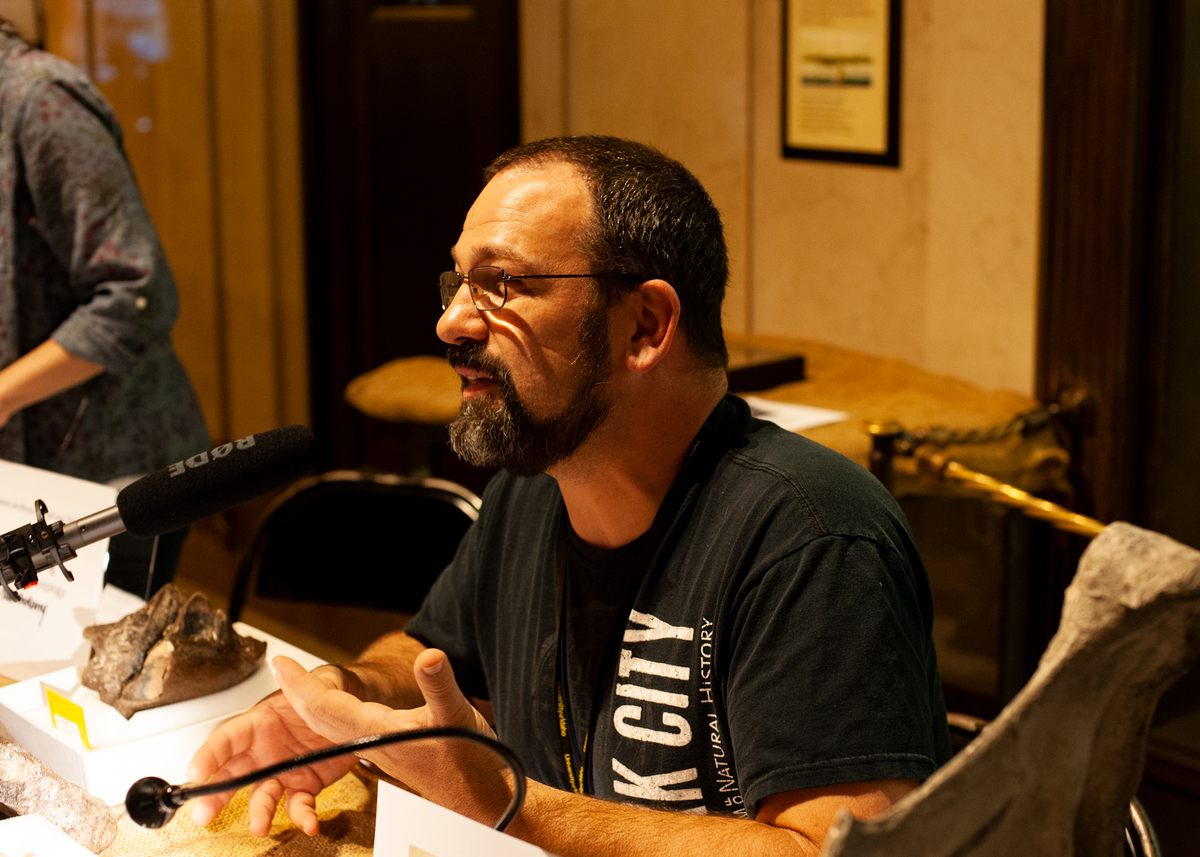
Tom Shamy approached the table with what appeared to be a phalange, packed gingerly in a plastic container. The bone was flat, vaguely beige, somewhat rounded, and bulbous at the end. He said he found it on a dig at the Sangiran archaeological site in Central Java. Rains had caused a hillside to crumble open, and Shamy picked up the bone, which had been buried a few feet underground. “Oh, wow,” Mehling sighed, excited, drawn out, a little bit growly.
Mehling held it up to his ear and scratched it with his fingernail. “Normally, what I would have done is tap it on my tooth,” he said, “but I don’t do that in this venue. I wasn’t gonna eat your bone. I eat my own bones.” The tooth test helps him estimate mineral quality, which reveals clues about age. “If it’s modern bone, it’ll make a clicking sound, and if it’s fossil bone, it’s more ceramic, like ting, ting, ting,” he said. “That subtle difference can imply that it’s much older.” Even without bringing his incisors into it, Mehling had a hunch. “I think it’s modern, I think it’s a mammal, I think it’s a toe bone,” he told Shamy. He referred Shamy on to another table, where mammal experts could rule out other things—human bone, a domesticated animal—and hazard a more concrete guess.
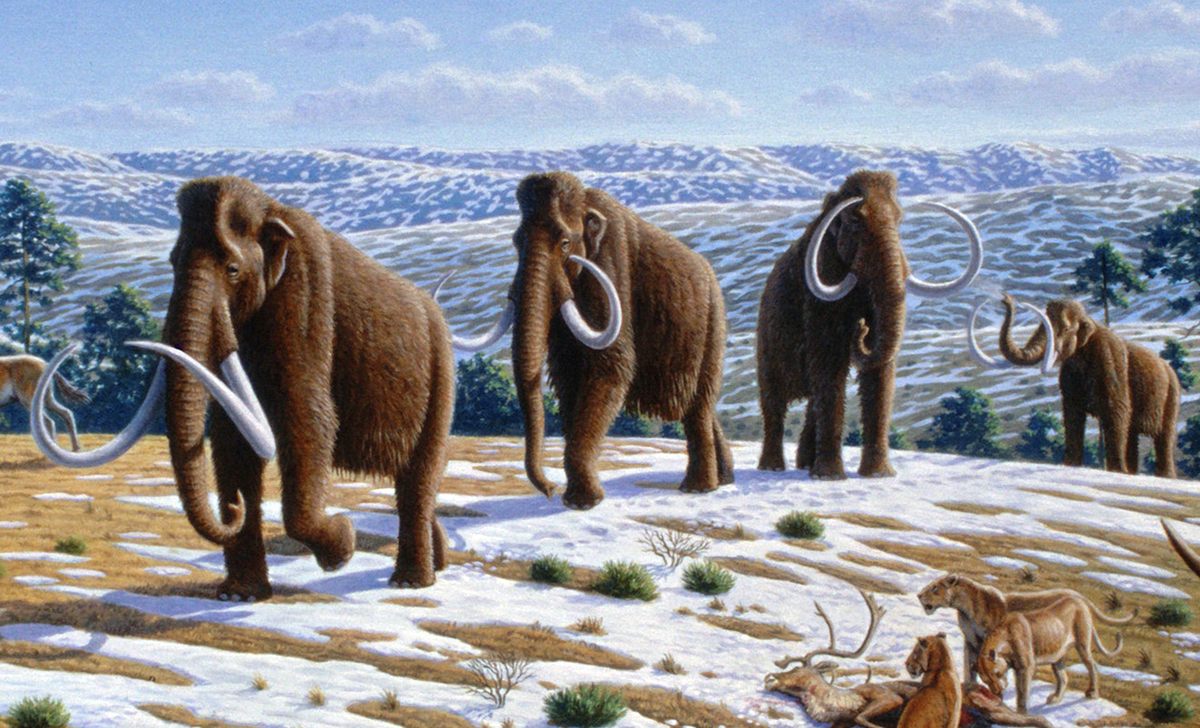
Identification day is a structured throwback to wonderment and the thrill of discovery that magnetized Mehling to his profession in the first place. As a kid growing up in Jackson Heights, Queens, Mehling would tag along with his family on short journeys to Long Island or New Jersey, where beaches and woods held secrets. “Anyone who starts in natural history is picking stuff up in the woods, on the ground, wherever. That’s where we came from,” Mehling says. He’d turn over rocks or squat down to study a leaf. “I loved anything unfamiliar in nature,” he said. “Even if you’ve seen it in a book, it’s completely different to find it on your own.” One early find was a dearly departed bat wedged deep into the roofing shingles of a Quaker church. “That really messed me up for a while,” he says, laughing. “I pulled it out against my mom’s wishes.” In paleontology, Mehling has found a way to funnel the personality traits that lead a kid to inspect a decaying bat into a profession. At the root of it, the inclination is the same, he says—“picking things up and trying to figure out what they are.”
Sometimes, that’s a tough ask, and a reminder arrived early in the day, when Dana Orlinsky, a science teacher at P.S. 340, offered something that looked, to me, like a rock. That’s what Orlinsky reckoned, too, but a student had brought it into class, and she said she’d investigate. Mehling knew what to look for. The find, whatever it was, had broken into fragments, and these reveled a dentine middle sandwiched between two rough enamel sides. It suggested a tooth—a big, old one, and Mehling figured it came from a mammoth. “Delicious!” he said. “That’s awesome! That’s a score. Hold on, I gotta write that down.”
Cultivating the skills to recognize these things takes time. Mehling is still improving, too. “If someone brought that into me a few years ago, I probably would have said it was a rock,” Mehling tells me. “The primary objective here is education, but it’s also really good practice for me to hone my skills identifying stuff. This and all the other fossil ID I do is always fine-tuning that collection of search images I play with.”

Once such images are cataloged in his mental filing cabinet, though, rifling through them to match an object with a name tends to be quick work. “A lot of that is really subconscious,” Mehling says. “You’d be surprised how fast we can identify these things—literally a split-second.” He likened the process to seeing a $20 bill flashed before your eyes: You’d recognize the color, shape, and dimensions, even if you only saw it as a blur. A fossil’s location is crucial to the identification process, too. Coordinates and surrounding rock can help place it in the long timeline of world history. But even if Mehling has cracked a puzzle nearly instantaneously, he still takes a beat. “You can’t react as fast as it happens in your mind because no one trusts what you’ve just done—they assume you’re not being careful,” he says.
Mehling recognized one surprising find right away. Peggy Feitell, going on 25 years as a volunteer in the museum’s Discovery Room, brought something squat, pale, and log-shaped. The object was unlabeled, and Feitell wanted to know what it was so that she could better field questions from kids and parents. It was glued down inside a plastic container sealed around the edges with tape. “It’s stuck,” Mehling told her. “So the kids don’t get it,” Feitell replied.
No matter. “Mmm hmm, I think I know what this is,” Mehling told her. “I’m pretty sure that’s a turd.”
It was hard to say which animal passed the prehistoric stool—sometimes, pieces of bone can suggest that it might have traveled through the gut of a carnivore, but Mehling didn’t spot anything like that. “I was hoping more that it would be shells in a rock, but apparently not,” Feitell said. She would have loved to crack it open and find gems inside, but then again, “it’s still amazing that something like this lasted so long and fossilized like this.”
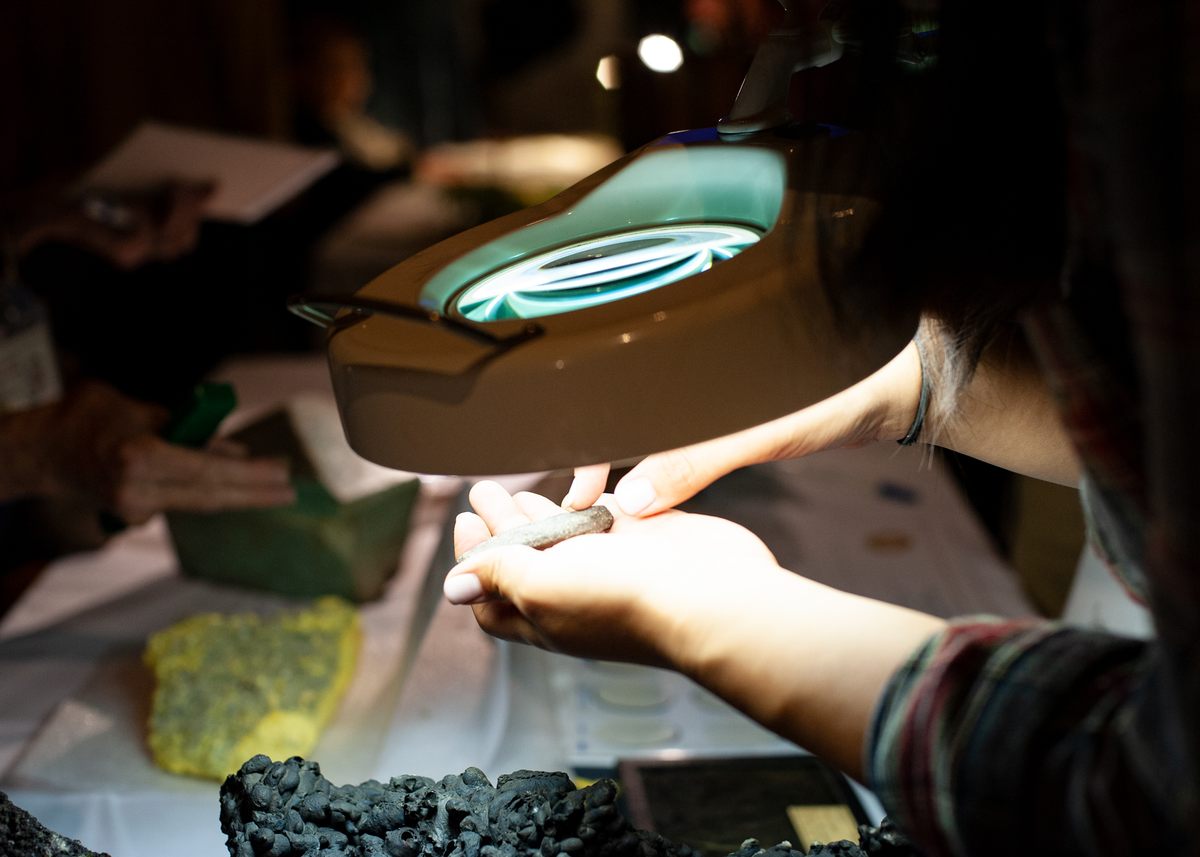
At ID day, the concept of “value” is a little vaporous. Some objects have accrued a kind of worth by virtue of how beloved they are. An attendee named Peter Burdi brought two pottery fragments he’d found on a Spanish beach in 1972, when he was nine years old. He’s 55 now, and they’ve been wrapped in a tissue and tucked in a drawer next to paper clips and other household detritus. Sentimentalism counts for something. Other visitors are just mildly curious or somewhat forgetful. (This year, one young visitor turned up to get another assessment of a sharp little tooth, because she couldn’t remember what Mehling had told her last time they met.) Of course, some ambitions are much grander. Mehling said that a few people come armed with “wishful arrowheads” or other things that their imagination has contorted into something unique and precious.
In reality, it’s “incredibly rare that someone walks in with something genuinely scientifically valuable,” he added. “I get people coming in saying, ‘I’m certain this is a dinosaur egg,’ and I have to say, ‘Sorry, no, it’s a rock.’” Those spectacular disappointments are part of the longstanding tradition, too. When New York magazine covered the first ID day in 1979, a reporter noted that “the frauds outnumbered the real specimens.” One purported dinosaur bone was a cut of prime rib, and a piece of ancient pottery turned out to be shards of clay from a skeet-shooting mission.

But special finds do sometimes surface. At one ID day a few years back, Mehling noticed something out of the corner of his eye. There were five or six people standing in line, and he saw one of them holding what looked to him to be a fossil whale bone. He jotted something down in his notebook to jog his memory when that person arrived at the front of the line. When Mehling flipped the bone over, he realized he’d been wrong. There were two holes on one side, and “those two holes turned it into something else,” he said.
He recognized it: The color and shape “all locked together in this search image, and I thought, ‘I know where this is, I know where it’s from, I know how valuable it is,’” Mehling said. The real origin story, he added, was “ten thousand times more interesting” than he’d wagered. The vertebrae had come from a plesiosaur, a prehistoric marine reptile, and it was something special—Mehling has been collecting in New Jersey for the better part of three decades, and he’s never found one there. This one wouldn’t have surfaced if it hadn’t been for two brothers picking up rocks to toss in the creek behind their house. If they’d chucked the vertebrae along with a handful of pebbles, the artifact could have slipped through their fingers and out of sight.

This year, one of the most valuable finds may turn out to be a 200-million-year-old dinosaur footprint on a slab of rock broken apart in East Hampton, Massachusetts. Dinosaur footprints are well-documented nearby, and this alleged footprint was up for grabs at a yard sale there; a construction worker had found it while yanking up a road. Mehling looked at the slab a few separate times. At first, he waffled and hedged. The conditions were right, but the footprint seemed—at first—partial and somewhat muddied. “I’d give it about a 50-percent chance,” Mehling told Marisa Klages-Bombich. Her young, dinosaur-obsessed son, Amadeo looked on, sporting a green t-shirt with a T-Rex skeleton print.
When Klages-Bombich circled back to the table a little later, it was a different story. “The lighting was totally different, and the track was totally obvious, right in the middle, like duh,” Mehling said. “The lighting is everything. When people collect these, normally they’ll only go out at the crack of dawn or right before dusk, because the light’s coming in sideways and you can see them right on the ground. At noon, they disappear. They’re just invisible.” A second look paid off, and the track may be destined for an exhibition of ID day’s greatest hits. After that, Klages-Bombich says, “it’ll just go back in Amadeo’s bedroom, on the bookshelf, where it’s always been.”

Because Mehling has been doing this for decades—and probably because he’s fun to hang out with—he has a coterie of regulars who stockpile their finds throughout the year and save them for annual diagnosis. Mehling recognized one of these crews right away. Robert Jaffe has been coming in from Long Island since before his kids were born. Sixteen-year-old Nate and 13-year-old Vita have been tagging along since they were in strollers. Mehling has seen them grow up, and, like a distant uncle, he can’t stop himself from remarking on the changes. “You’re taller than your dad now, what are you doing?” he hollered to Nate, and then filled them in on the day’s identifications—the footprint, the tooth. Nate credits Mehling with inspiring him to study geology when he gets to college. Mehling grinned. “That’s one step away from paleo,” he said. “We’ll get you sooner or later.”
Mehling is infectiously enthusiastic about paleontology, and he becomes visibly jazzed when a kid gets excited about it, too. In addition to sharpening his own chops, the identification festivities give Mehling a chance to evangelize about the field he clearly loves. He hopes that enthusiasm is contagious, and that it sticks.
Before heading home with his now-confirmed dinosaur footprint, Amadeo informed Mehling that he wants to be a paleontologist, too. (And also a zookeeper, chef, and stuffed-animal designer.) “You might replace me someday, doctor,” Mehling told him. “I’ll be 150 years old, and I’ll bring you my dinosaur footprints.”



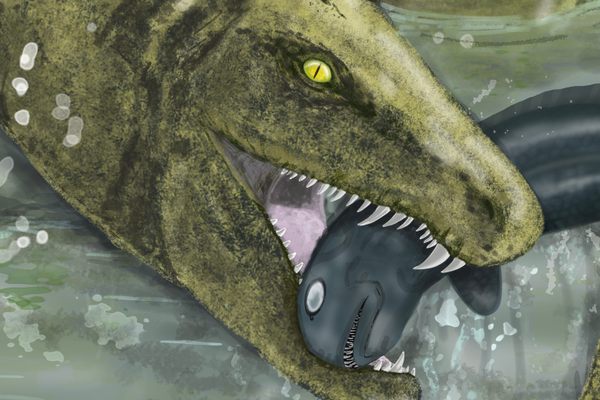
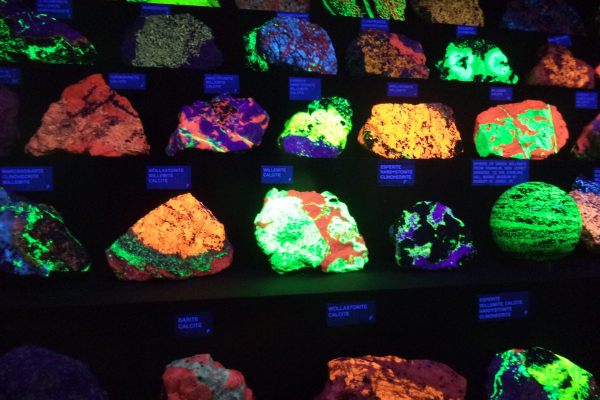





























Follow us on Twitter to get the latest on the world's hidden wonders.
Like us on Facebook to get the latest on the world's hidden wonders.
Follow us on Twitter Like us on Facebook